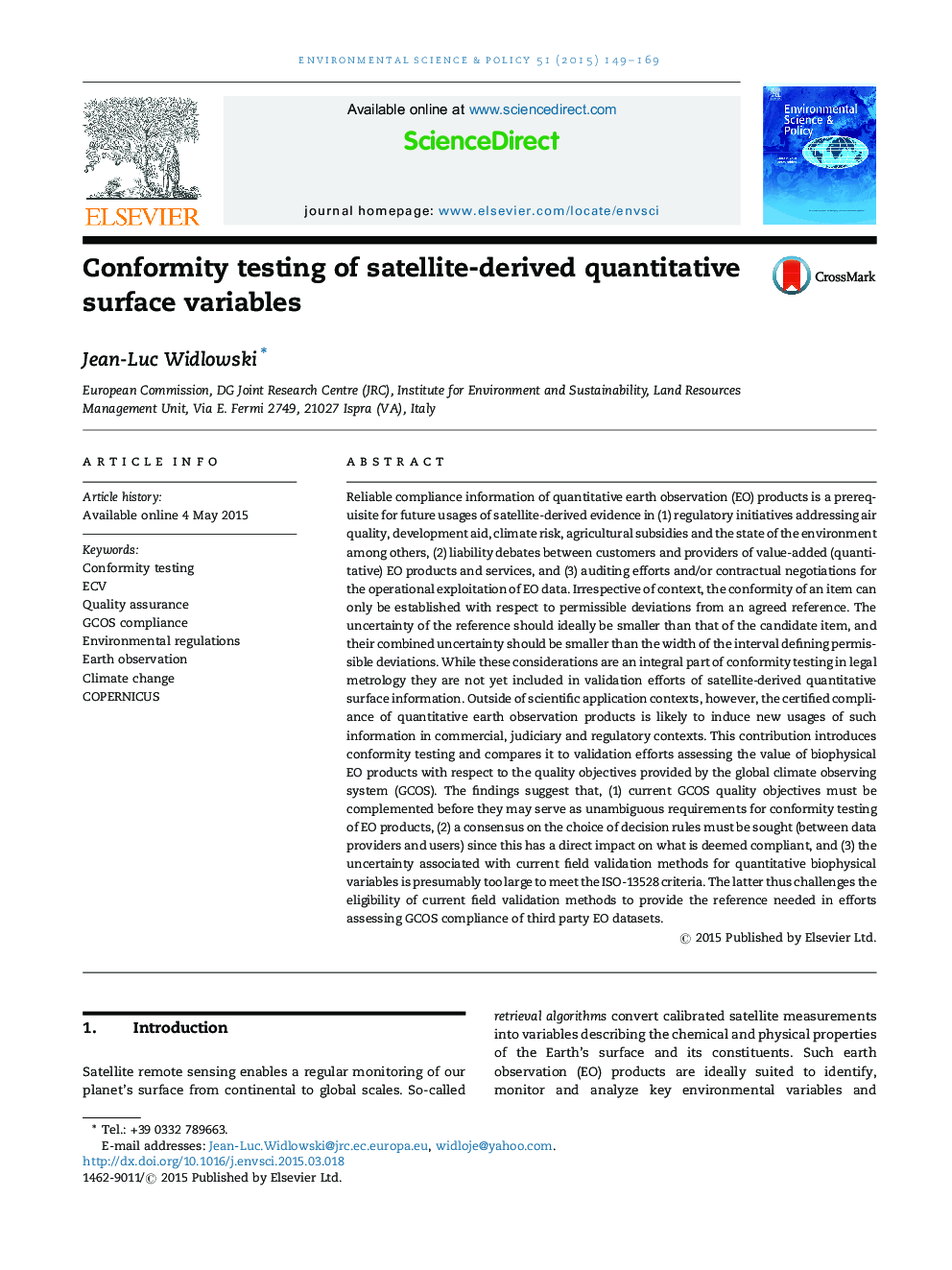| کد مقاله | کد نشریه | سال انتشار | مقاله انگلیسی | نسخه تمام متن |
|---|---|---|---|---|
| 7467439 | 1485055 | 2015 | 21 صفحه PDF | دانلود رایگان |
عنوان انگلیسی مقاله ISI
Conformity testing of satellite-derived quantitative surface variables
ترجمه فارسی عنوان
تست سازگاری متغیرهای سطح کمی حاصل از ماهواره
دانلود مقاله + سفارش ترجمه
دانلود مقاله ISI انگلیسی
رایگان برای ایرانیان
کلمات کلیدی
موضوعات مرتبط
مهندسی و علوم پایه
مهندسی انرژی
انرژی های تجدید پذیر، توسعه پایدار و محیط زیست
چکیده انگلیسی
Reliable compliance information of quantitative earth observation (EO) products is a prerequisite for future usages of satellite-derived evidence in (1) regulatory initiatives addressing air quality, development aid, climate risk, agricultural subsidies and the state of the environment among others, (2) liability debates between customers and providers of value-added (quantitative) EO products and services, and (3) auditing efforts and/or contractual negotiations for the operational exploitation of EO data. Irrespective of context, the conformity of an item can only be established with respect to permissible deviations from an agreed reference. The uncertainty of the reference should ideally be smaller than that of the candidate item, and their combined uncertainty should be smaller than the width of the interval defining permissible deviations. While these considerations are an integral part of conformity testing in legal metrology they are not yet included in validation efforts of satellite-derived quantitative surface information. Outside of scientific application contexts, however, the certified compliance of quantitative earth observation products is likely to induce new usages of such information in commercial, judiciary and regulatory contexts. This contribution introduces conformity testing and compares it to validation efforts assessing the value of biophysical EO products with respect to the quality objectives provided by the global climate observing system (GCOS). The findings suggest that, (1) current GCOS quality objectives must be complemented before they may serve as unambiguous requirements for conformity testing of EO products, (2) a consensus on the choice of decision rules must be sought (between data providers and users) since this has a direct impact on what is deemed compliant, and (3) the uncertainty associated with current field validation methods for quantitative biophysical variables is presumably too large to meet the ISO-13528 criteria. The latter thus challenges the eligibility of current field validation methods to provide the reference needed in efforts assessing GCOS compliance of third party EO datasets.
ناشر
Database: Elsevier - ScienceDirect (ساینس دایرکت)
Journal: Environmental Science & Policy - Volume 51, August 2015, Pages 149-169
Journal: Environmental Science & Policy - Volume 51, August 2015, Pages 149-169
نویسندگان
Jean-Luc Widlowski,
